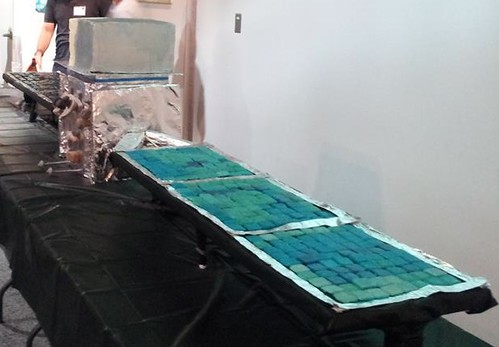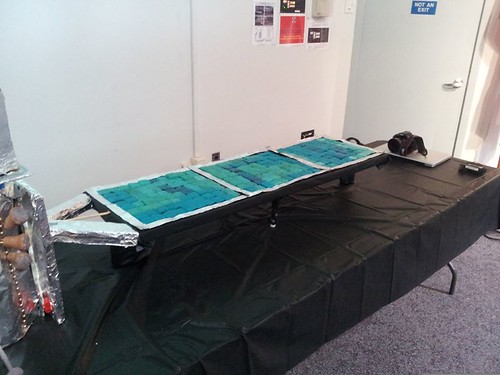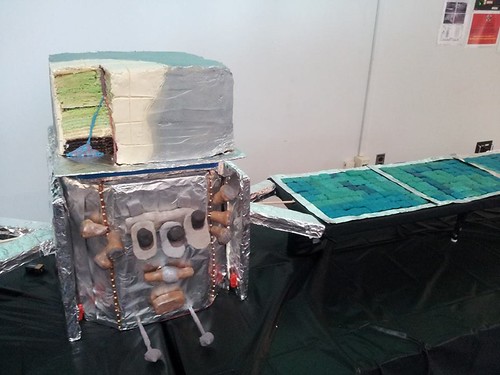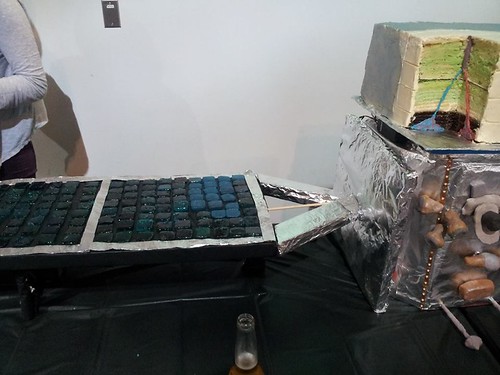Happy birthday, Fermi!
- By Maggie Masetti
- August 23, 2013
- Comments Off on Happy birthday, Fermi!
Recently we passed the 5th birthday of NASA’s Fermi Gamma-ray Space Telescope.
And there was cake!

Yup, this satellite is made of cake! And candy! Credit: Eric Winter
We recently asked, why infrared? And we could just as easily ask, why gamma-rays? As it turns out, there are many strange and wonderful phenomena in the universe that result in the generation of huge amounts of energy and the emission of the highest energies of light – gamma-rays. What kinds of things emit gamma-rays? Supermassive black holes, neutron stars merging, and streams of hot gas moving close to the speed of light, just to name a few!
There are a lot of questions associated with these things, of course, as we seek to better understand them. For example: what is producing this much energy? What is the environment that surrounds these phenomena like? How can studying these objects help us to better understand how the universe behaves? (Studying specific details really does lend itself to helping us see the bigger picture!)
The Fermi satellite has spent five years making observations to help us better understand things from super high energy subatomic particles to the early evolution of the universe.
You can read some of the news stories about Fermi on NASA.gov/Fermi.
Additionally, you can read some of Blueshift’s coverage of the Fermi mission.
There is also a NASA feature about Fermi’s 5th anniversary, as well as a video:
To celebrate 5 years of Fermi data, a 1/4 scale model of Fermi was made… out of cake! (No, the cake was not a lie!) Impressively, the solar cells on the model are homemade, hand-cast hard candy wafers.
All photos courtesy of Eric Winter.
The cake-makers even included the electron-positron conversion tracks in the LAT (Large Area Telescope) on the top. You can see that the cake is cut away to show the layers of the detector inside. The red and blue trails show the cascade of particles that signal the presence of a gamma-ray in the instrument. How does that work, you ask? An incoming gamma-ray photon reacts with the materials in the telescope, producing an electron and positron pair that travel through the telescope. As they go through the layers of the instrument, they create additional charged particles. The whole cascade is tracked and can tell astronomers about the direction and energy of the original gamma-ray photon.
We expect to get our hands on a Flickr set of images of the cake – we’ll update the post when we have it!
As the Fermi project enters its extended mission, we all wish it many happy more years of science!





